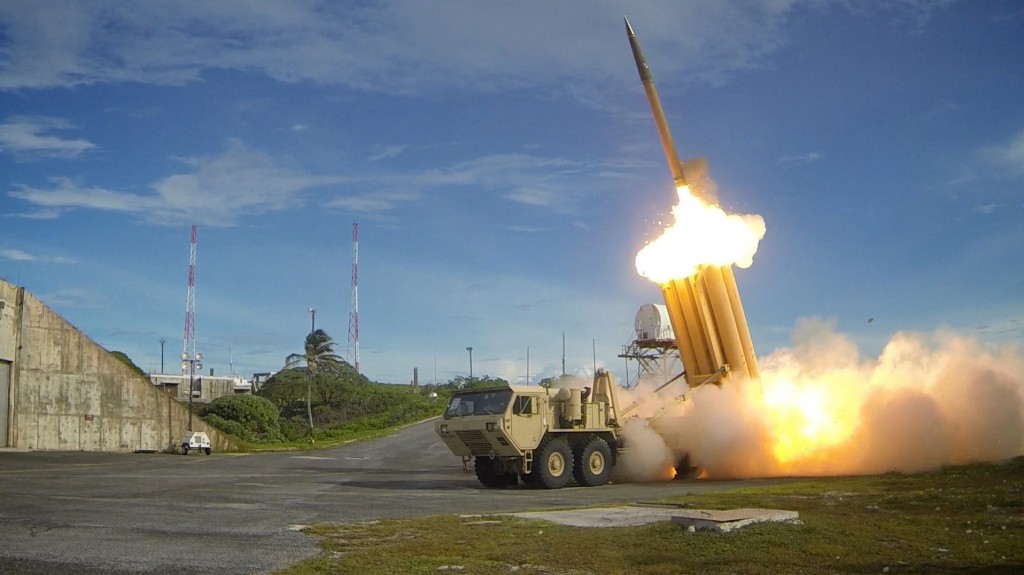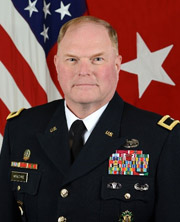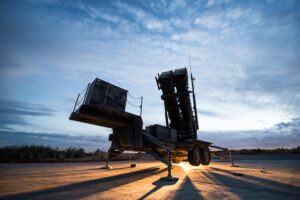Army Boosts Air Defense, Key To Joint & Allied Fight
Posted on

THAAD missile launch
The shift from low-intensity land wars and the concepts of operations associated with them to getting ready for higher tempo and higher intensity operations are key to the transformation of U.S. and allied forces. The challenge facing the liberal democracies was well put in a recent presentation by a senior Finnish defense official: “The timeline for early warning is shorter; the threshold for the use of force is lower.”
The US Army provides a key combat enabler with Air Defense Artillery (ADA) now engaged in global military operations. ADA plays an increasingly significant role within joint and coalition forces shaping America’s 21st Century offensive-defensive enterprise way of war. Modern ADA has seen the growing importance of Patriot and THAAD within the Joint Force, but to reshape the Army’s ground maneuver force, ADA must be built more broadly into its transformation going forward.
Recently, we had a chance to talk with one of the US Army’s leading ADA architects, Brig. Gen. Randall McIntire. He is commandant of the ADA School based at Fort Sill, Okla. and in this capacity both trains for the current fight and prepares for success in combat.

Brig. Gen. Randall McIntire
As the Army prepares its future with the return to a priority on high tempo and high-intensity operations, ADA plays a key role. McIntire identified a number of key priorities for the current Chief of Staff of the US Army and among them is clearly a growing role for defensive capabilities.
Without effective defense in the maneuver force, you’re not going to be able to survive. Air Defense is a key enabler for the maneuver force, he says: “Survivability of the maneuver force requires an organic air & missile defense as well as extended defense for the integrated battlefield. It is not an afterthought; it is a core requirement of mission success.”
McIntire emphasized that integrated fires are the key to cracking adversary efforts to shape anti-access and area denial of operational areas. At Fort Sill, both offensive fires and defensive fires are co-located. Base closures in the mid-2000s forced co-location of offense and defense and that has provided a foundation for creating the kind of integration crucial to develop integrated fires. Put another way, a template has been put together – integrating offensive and defensive fires – which lays down the foundation for incorporating the technologies entering the force.
The new generation of ADA warriors are comfortable working in the integrated battlespace with other services and allies as well. In fact, ADA can provide key strategic deterrence, as well as reassurance for our partners and allies, without requiring a heavy “boots on the ground” force. Air defense is a key enabler for “setting the theater” for all levels and phases of military operations. It is important, however, to understand that ADA forces on the ground in an allied situation must be integrated with the air and naval power of the United States to provide for the kind of protection which land warriors on the ground deserve.

AN/TPY-2 missile defense radar, often used with THAAD.
But to get where ADA needs to go and to achieve its full promise of providing core capabilities within an integrated offensive-defensive force, acquisition approaches must change in some fundamental ways. Most importantly, rather than buying whole systems, and being dependent on prime contractors for the complete integration of those systems, the Army is looking towards a commodity approach.
What the Army is looking to do is be able to manage interactions among C2, sensors, and missiles and to improve whichever of these “commodities” needs to be plus-ed up. It is also crucial for the Army to be able to integrate the defense systems in the maneuver force, as well as to focus on what is necessary for the evolving integrated battlespace. It is not simply about after market integration; it is about building in integration from the ground up as new systems are added as well.
This means that sorting out integration of Patriot and THAAD is necessary for the current fight and for establishing a way ahead for future integration as well. Rather than looking at a very broad network integrated across at battle space, it makes sense to look at discrete force packages integrated around the effects that they can create. Clearly, it is important that Patriot and THAAD can work together but also provide tools to be integrated with air and naval systems to support a particular force insertion mission as well.
By the Army focusing on its ability to integrate with the services C2 or missiles or sensors as the case needs to be, it will be in a position to shape integrated force packages to support the evolving needs of the integrated battlespace. In other words, one can look back at the last 20 years in which Patriot and THAAD have emerged as important systems and see these as foundations for moving forward to a more integrated approach.
“The way I look at the situation,” McIntire says, “is similar to two boxers sparring and working together to defeat the adversary. One boxer is throwing the offensive punches; the second boxer is providing for the defense of the force. The two boxers working together provide for the striking defense force to defeat the adversary, thus allowing the maneuver force the ability to get into the close fight.”
A key ally which is aligning itself with the new approach is Poland. Poland is approaching its Article III NATO defense efforts by shaping a core missile defense capability, both medium and short range which allows it to deal with the 21st century Russian threat of missile strikes as a core part of their operational offensive force It is about building a capability which can defend Poland but link into the defense in depth which is necessary in the region.

Patriot
The Poles are focusing on both building mid-range and short-range missile defense. With regard to their mid-range missile defense, they are building in capabilities for networking back to their own forces and to those of their neighbors and allies. The system selected by the Poles to fill the mid-range missile defense system is a Patriot variant. Very noteworthy is the command and control aspect of the approach they are taking.
They are not pursuing a classic prime-contractor-provides-all approach, but are opting for an open architecture system to allow them to both have open-ended modernization and also work the linkages to NATO neighbors and allies.
The Poles are acquiring the Integrated Air and Missile Defense Battle Command System (IBCS).
Rather than buying a proprietary C2 system, the Poles are leaning forward to procure an open architecture C2 system. They won’t have siloed systems that require new or upgraded C2 with each new radar or interceptor.
It is about shaping a defense in-depth capability across Poland, German, the Baltics, Finland and the Nordics. Without shaping common C2 capabilities, defense in depth will be more limited than siloed defense capabilities will allow for.
In short, the role of ADA within multi-domain warfare is of growing impact and significance. And to play an expanded role integrated C2 is a key enabler for shaping the way ahead. We have heard a lot about anti-access and area denial, but the US and the allies are not sitting on their hands. They are building key capabilities such as fifth-generation force enablers and expanded ADA capabilities and integration. And with the coming of laser weapons, a recalibrated and integrated ADA force will have increasing impact on dealing with the threat.
Subscribe to our newsletter
Promotions, new products and sales. Directly to your inbox.
